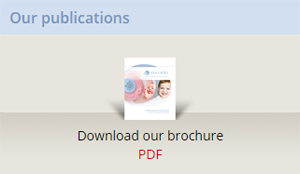GIFT
GIFT (Gamete IntraFallopian Transfer) was an assisted reproductive procedure, which involved placing in the fallopian tube 3-4 oocytes mixed with sperm, using a special catheter. Sperm used in GIFT was activated using the Percoll method that includes separating an adequate number of motile, morphologically normal spermatozoa from the initial sample.
Before egg retrieval a woman’s ovaries were stimulated, according to medical protocols that promote multiple follicular growth. Egg retrieval is usually performed transvaginally and rarely laparoscopically. On the same day, laparoscopy was used to transfer the gametes (oocytes and sperm) in the fallopian tube. It is obvious that, GIFT required general anesthesia and hospital admission.
Tubal patency (at least one tube) and normal sperm were prerequisites for GIFT.
GIFT was commonly chosen in cases of unexplained infertility, mild endometriosis, mild oligo-asthenozoospermia and previous failed Intrauterine Inseminations (IUI), indications present in the majority of cases requiring infertility treatment.
GIFT disadvantages included, high incidence of ectopic pregnancy, laparoscopic surgery under general anesthesia, lower pregnancy rates compared to IVF and inability to check fertilization rates. In our days, GIFT is rarely the preferred choice of treatment.
ZIFT
ZIFT (Zygote IntraFallopian Transfer) was an assisted reproductive procedure involving placing laparoscopically in the fallopian tube, the fertilized eggs – at this stage called the zygotes-, using a special catheter. Zygotes were produced after mixing the oocytes with motile sperm in the laboratory.
Embryos were transferred in the fallopian tube, instead of the uterus, 24 – 48 hours after egg collection. In our days, ΖIFT is not a method of choice.






























